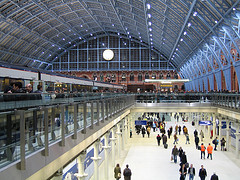-
Follow me on Twitter
Follow @SarahButler100
Author Archives: Sarah Butler
Picador to publish Ten Things I’ve Learnt About Love
I am thrilled that Picador have bought world rights for my novel, Ten Things I’ve Learnt About Love (and they will also publish my next, as yet unwritten, novel) . It is the third novel I’ve written, and it’s something I’ve been working on since 2007. I’m discovering it’s quite overwhelming to actually achieve your life ambition!
The novel brings together my interest in place, belonging, home and family. In some ways it’s a love letter to London, a city I’ve lived in since 2004 and have not always had an easy relationship with.
Ten Things I’ve Learnt About Love will be published in February 2013.
Collecting Home: A Conversation
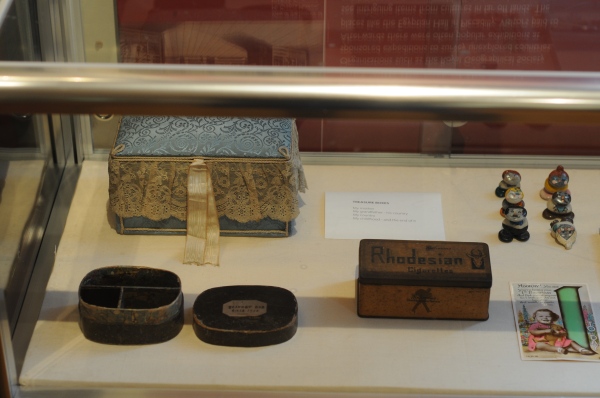 Thursday 16th February
Thursday 16th February
5.00-7.00pm
Cuming Museum, Old Walworth Town Hall, 151 Walworth Road, London, SE17 1RY (map)
Refreshments provided – all welcome
Please join myself and artist, Eva Sajovic to celebrate the end of Collecting Home, an artist residency at the Cuming Museum exploring objects, home and local stories, and the close of Home From Home, an exhibition of portraits and stories from Elephant and Castle.
5.00- 6.30pm
– Move between three conversation points throughout the museum space, and share your ideas about the residency themes: what object in your life would you most hate to lose? What is the value of artist projects in Elephant and Castle? What are the ethics and dilemmas of participatory arts projects? What does it mean to represent individuals and communities through photos, stories and objects?
– Place your ‘bid’ to take home one of the Home from Home exhibition pictures for free (photos will be allocated and be available to collect after 18th February).
– Explore the work created by Eva, Sarah, local residents, school children, and artists throughout the project.
6.30pm – A brief presentation by Eva and Sarah, sharing highlights from the project.
7.00pm – Close
Writers and Regeneration: Getting Started – workshop, Wednesday 15th February
I am running a workshop exploring opportunities for writers to work in the field of regeneration, at UCF on Wednesday 15th February.
This event will be of interest to writers and creatives working in the field of community arts and regeneration projects, and practising writers looking for further outlets for their work.
The event is free to all Canterbury Christ Church University staff and students. This event is open to the public, but unfortunately if you are not a member of Christ Church there is a £10 charge.
Venue: Folkestone, UCF
Time: 10:30 – 3.30
Contact: Jane Seaman
Telephone: 01303 760600
Url: www.ucf.ac.uk
Collecting Home
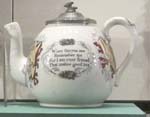
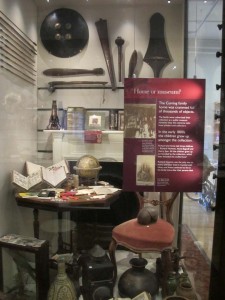 What object from your life would you put into a museum?
What object from your life would you put into a museum?
I am really excited to be working with artist and photographer Eva Sajovic on Collecting Home, an extension of the work we did together on Home From Home, which culminated in a book published last year, and which is being exhibited at the Cuming Museum 22nd Nov – 18 Feb.
Collecting Home continues our exploration of stories and people local to Elephant and Castle: an ongoing conversation about the objects people would choose to represent themselves, their lives or the history of their area.
Visit the project blog to find out more, and if you’re interested in getting involved, please drop us an email: collectinghome@yahoo.co.uk
Framing the City – winning entry!
I’m really excited to have been chosen as the winner of CRESC’s Framing the City writing competition!
My short story, You Would Leave All This, will feature in a forthcoming issue of the New Manchester Review, a really nice online publication.
Audio Obscura, Lavina Greenlaw, 13 September – 23 October 2011
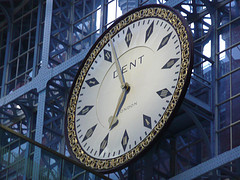
The Audio Obscura booth sits in the centre of St Pancras Station. Audience members can borrow a headphone set (leaving a credit card or phone as deposit) any time between 12 noon and 8pm. The ‘performance’ lasts for 30 minutes and audience members are invited to wander around the station and listen.
The piece has two main ‘layers’: text, written by Lavinia Greenlaw, and performed by 12 actors (who represent a mix of ages, accents and genders), and a soundscape designed by Tim Barker and Harry Escott. The headphones block out surrounding noise, so only the loudest of announcements invade the piece, and there are times that feel almost magical when the audience watches the bustle of the station with no accompanying noise – an experience which heightens our attention to the visual, and our response when sound resumes.
Greenlaw is explicitly exploring the ephemerality, proximity and fragmentary nature of our experiences in train stations. The accompanying leaflet states that Audio Obscura “is situated in tension with our compulsion to construct narratives”, and it is this aspect of the work that is both intriguing, and potentially frustrating. The audience is placed in the role of detective, and active participant. The characters give us snippets of thoughts and facts, half-glimpsed insights into stories, which insist on us filling in the blanks, or perhaps simply reveal our desire to find meaning and create narrative from what we come across.
A woman discovers a traumatic secret about her husband of thirty years. We know it is connected to a computer, we are given the image ‘like meat on skewers’, we have her reaction ‘you fucking bastard,’ and hear her fear that he, and perhaps she will go to prison. From this we are left to find our own response.
Other stories are even more fragmentary: a woman refers to a procedure that ‘can be messy’ and questions if she should have shared the information with ‘him’; a man says ‘I shouldn’t have told her about my brother’ – but we are given no other clues. The piece is all about what is not said, and how we find meaning (or don’t find meaning) in the spaces in between. Some may find that frustrating, but that frustration, that raising of questions and then refusing to fully answer them, is in fact the core of the piece and speaks to its site-specificity: a train station filled with people arriving, and departing, a place that offers us only momentary glimpses of people’s lives.
Perhaps a better way to assess the effect of Audio Obscura is to think instead about atmosphere and theme, rather than narrative arc or drive (Greenlaw does create a male character, who punctuates the piece with rising urgency, looking for his train platform, which he eventually finds, and then boards his train. Despite giving the piece some narrative drive, I actually found this the least satisfying strand, perhaps because it was the least mysterious). Through carefully chosen language (the piece throughout has a strong poetic quality and rhythm), and a soundscape that both supports the tension and melancholy of the words, and creates another rhythm – of silence, not quite heard conversations, train announcements, traffic noise – Audio Obscura creates an overwhelming mood, encompassing secrets, leaving, fear, regret, and what cannot be said. On a personal level I was left with more questions than answers, and a strong sense of disquiet.
Greenlaw switches between third, second and first person narrative voices, utilising the different effects of each – the ‘objectiveness’ and intrigue of ‘he is not saying what he wants to say’; the uncomfortableness of being addressed as ‘you’; and the voyeuristic feeling of having immediate, fleeting access into a stranger’s head in the first person sections. I was less convinced by the lists of nouns, although they did lead to the final moment of the piece: ‘step, step, step, step’, which effectively drew me back into the space I was inhabiting and watching.
Audio Obscura is a piece that exists at the intersection between the text/sound, the audience and the space. St Pancras station was a fitting selection of location, with its stunning architecture, a layout which allows the audience to wander without feeling hassled, and to stop and take in a view, and its own atmosphere of peace and reflection. I couldn’t help thinking that the piece would have been significantly more problematic if located in King’s Cross Station during the building work for instance. The piece gives significance to the everyday, creating a performance (or perhaps just revealing it) from the daily bustle of a station. The isolation of the headphones, the almost complete blocking out of external sounds, and the shifting narrative voices result in a shifting relationship between the audience, their environment and the people around them, and lead us to question our own visibility/invisibility in the space.
A high quality, free experience that enhances the audience’s experience of a fantastic piece of London architecture and immerses them in an absorbing atmosphere, Audio Obscura challenges and perhaps exposes our desire for narrative and meaning. For me it didn’t go too far, or disintegrate into mere fragments without any meaning or connection, which is a risk with a piece like this. It did frustrate me, but I see this as a deliberately created effect which only enhances the piece.
Never, Never, Never Give Up
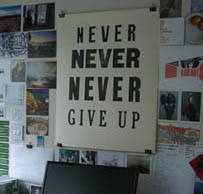
I am very pleased with my new poster from the fabulous Clerk Ink Well. A must for every writer I think!
South Kilburn Studios to be continued

I was so delighted to go to the exhibition of work by the trainees at South Kilburn Studios last week. I commissioned the Studios as part of the South Kilburn Public Art Programme, with the intention of animating a disused space and providing opportunities for local young people to gain skills and experience. Through the hard work and dedication of The Architecture Foundation, Practice Architecture, Brent Council and the tenants and trainees of the Studios, the project’s been such a success that the council have agreed to fund it for an additional 6 months, and Number 10 are arranging a visit to find out more!
The exhibition runs from 9-23 September. For more information visit the South Kilburn Studios website. There’s more information about the wider Public Art programme in the Consultancy section of this site.
Morgan Stanley Clinical Building Creative Writer
In 2011-2012 I was writer-in-residence at Great Ormond Street Hospital as part of their GO Create! arts programme. I worked with patients, carers and staff on five wards who were about to move into the sparkling new Morgan Stanley Clinical Building (which opened mid 2012). Together we created six stories inspired by the characters and environments which characterise the new building. The stories feature flamingos, walruses, bears, koalas and eagles and travel from depths of the sea up into the mountains and sky. The stories have just been published as beautiful picture books which will soon be available to purchase online. Audio versions have also been recorded featuring Sir Ian McKellen, Helena Bonham-Carter, Rhys Ifan, Peter Capaldi, Sarah Macillan and Barbara Windsor; do have a listen online.
The Shop of Priceless Things: an interview with Adrian Riley
Adrian Riley is one of the designers of The Shop of Priceless Things, an example of how creativity can influence positive change in the community and environment by introducing art into the public realm. In this short interview he talks to Neelam Shah about the impact of the project and what made it successful.
1. What made you design the project?
Rotherham District Council wanted to do something about the empty Burger King building in the centre of the town and put out a shout for ideas via Rotherham Open Arts Renaissance. The brief was basically ‘do something with the windows’. It was in the lead up to Christmas and poet John Wedgwood Clark and I put our heads together and came up with the idea. We wanted something that reflected on the time of year when so many people are focused on shopping – could we offer something that brought a different perspective to the commercial hustle and bustle whilst still appearing to speak the same high street language? We asked ourselves “what are the things that money genuinely can’t buy?” and then thought “what if there was a shop that actually sold them?” (although by its very nature, those things would not actually be for sale). And so ‘The Shop of Priceless Things’ was born.
2. What made the project work?
The key was asking the people of Rotherham to tell us about their priceless things. It wouldn’t have had the same impact nor been an authentic artwork for Rotherham if it had been the things that John and I valued. So a day was spent in the town centre stopping shoppers and asking if they would share the sights and sounds they value, evocative smells that trigger memories, things that are special to touch. That formed the ‘stock’ of the shop – the phrases on the windows are pretty much as they came out of people’s mouths and there’s some really special and quite touching stuff there. John also wrote a poem that explained the shop, which we put on one of the windows, but we both think there’s genuine poetry in the things the people of Rotherham shared.
Our initial instinct was to design the vinyl on the windows as if it was a high street store mimicking existing logos and ‘sale!’ notices so that you’d only realise it wasn’t a real shop once you stopped to read – a kind of visual joke. Then we thought that these cherished thoughts ought to be treated with more respect, and arrived at something partway between a high-end furnishings store and graphic artwork. I think we made the right decision, as it has strong visual impact and yet a simplicity and purity that you rarely see on the UK high street. I’d have felt bad if the end result had appeared to cheapen the words by using commercial or discount visual language.
3. What impacts will your project have on society in general? Do you think people/website users who see your project will think differently about words, design and architecture in an urban society?
Well, our main audience is the people of Rotherham and we wanted to give back to them something of themselves. Beyond that, there’s a bit of tension between putting something positive and, we hope, beautiful into the middle of town and the property remaining empty. In an ideal world the building would be put to commercial use as the town becomes more prosperous and permanent public artworks be commissioned as part of intelligent thought about urban space (or even better – artists invited to be involved in the design of urban space). Whilst I’d rather see empty shops put to creative use than just stand there unwanted and unloved, temporary projects like ‘The Shop of Priceless Things’ ultimately draw attention to a society and economy where the town centre needs to rediscover a role beyond just being a collection of shops. Town centres have to become an environment where people can also play, dream, be culturally enriched and just enjoy being a community.
You can read a case study of The Shop of Priceless Things on the A Place For Words website.
